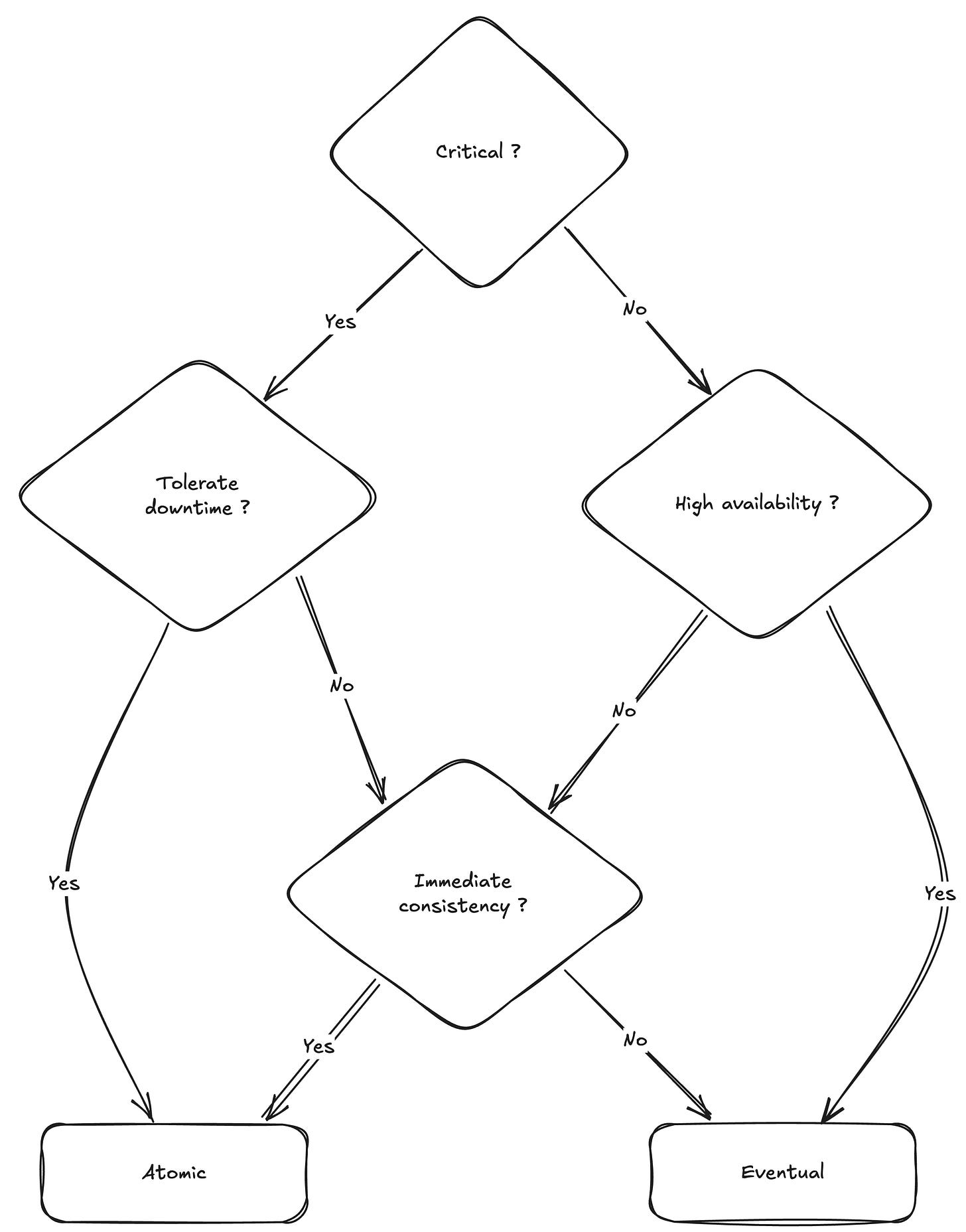The Three Dimensions of System Design: Consistency Models
Welcome to our new series exploring the fundamental dimensions of system design! After examining NFRs in our previous series, we're now diving into how systems actually interact and work together. Today, we'll explore our first dimension: Consistency.
Understanding Consistency Models
Think of consistency like different forms of communication in our daily lives. A phone call ensures immediate, synchronized communication where both parties have the same information instantly (atomic consistency). In contrast, an email or message might be read and responded to later, with information eventually reaching all participants (eventual consistency). This same principle applies to how our distributed systems handle data updates and information sharing.
The Two Faces of Consistency
Atomic Consistency 🎯
Atomic consistency ensures that all parts of the system see the same data at the same time. Think of it like a conference call where everyone must be present and acknowledge the information before moving forward - there's no chance of miscommunication or different versions of the truth.
Key Characteristics:
All operations appear to execute instantaneously
All observers see the same sequence of operations
Changes are immediately visible to all parts of the system
Strong guarantees about data consistency
Common Use Cases:
Financial transactions
Inventory management
User authentication states
Critical business operations
Eventual Consistency 🌊
Eventual consistency allows temporary differences in data views but guarantees that all parts will eventually converge. It's like a group chat where messages might arrive at slightly different times for different participants, but everyone eventually gets the complete conversation thread.
Key Characteristics:
Updates propagate gradually through the system
Temporary inconsistencies are acceptable
System converges to a consistent state over time
Higher availability and performance during network issues
Common Use Cases:
Social media feeds
Content delivery networks
Non-critical analytics
Comment systems
NFR Alignment Scores 📊
Let's examine how each consistency model aligns with different NFRs:
*purely subjective measuring
Atomic Consistency
Reliability: ⭐⭐⭐⭐⭐
Availability: ⭐⭐
Scalability: ⭐⭐
Performance: ⭐⭐
Maintainability: ⭐⭐⭐
Eventual Consistency
Reliability: ⭐⭐⭐
Availability: ⭐⭐⭐⭐⭐
Scalability: ⭐⭐⭐⭐⭐
Performance: ⭐⭐⭐⭐
Maintainability: ⭐⭐⭐⭐
A handy rule of thumb
When in doubt, here is a handy rule of thumb that you can use:
Architect's Alert 🚨
The choice between atomic and eventual consistency isn't always binary. Modern systems often use different consistency models for different parts of the system. For example, a social media platform might use:
Atomic consistency for user authentication
Eventual consistency for news feed updates
System Impact Considerations
When choosing a consistency model, consider:
Data Characteristics 📊
Value stability requirements
Update frequency
Read/write patterns
Business Requirements 💼
Regulatory compliance
User experience expectations
Business process requirements
Technical Environment 🔧
Geographic distribution
Network reliability
Scale requirements
Best Practices
Document Consistency Requirements
Clearly specify consistency needs per data type
Define acceptable convergence times for eventual consistency
Identify critical vs non-critical operations
Monitor Consistency Levels
Track convergence times
Monitor inconsistency windows
Alert on violation of consistency SLAs
Plan for Evolution
Design for possible future consistency requirements
Consider hybrid approaches where needed
Document consistency boundaries
Conclusion
Choosing the right consistency model is a fundamental architectural decision that impacts nearly every aspect of your system. While atomic consistency provides stronger guarantees, eventual consistency offers better scalability and availability. The key is understanding your specific needs and choosing accordingly.
Next in our series, we'll explore the second dimension: Communication Models (Sync vs Async). We'll see how these interact with consistency choices and continue building our understanding of system design dimensions.



